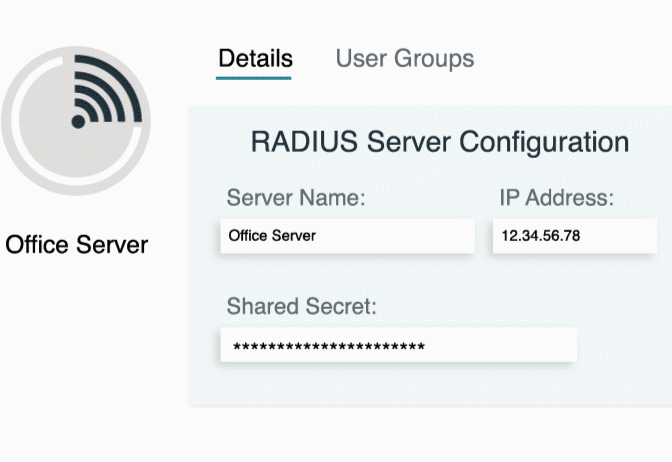Updated on March 7, 2025
Reverse DNS Lookup (rDNS) is a key tool in network administration, email authentication, and cybersecurity. It resolves an IP address back to its domain name, the opposite of traditional DNS, which maps domain names to IPs. This process validates server identities, tracks network activity, and improves security.
This guide will unpack the technical underpinnings, the unique features of rDNS, and its essential applications in modern IT ecosystems.
What Is Reverse DNS Lookup?
Reverse DNS Lookup is the process of resolving an IP address to a domain name using a special type of DNS record called a PTR (Pointer) record. PTR records reside within reverse DNS zones, which are specifically configured to serve this reverse resolution purpose.
Why Is Reverse DNS Lookup Important?
Reverse DNS improves network security, logging accuracy, and email authentication. It’s often used to verify server identities before email exchanges, helping to reduce spam and phishing risks. It also supports network diagnostics by identifying traffic sources, making it easier to detect threats and analyze incidents.
How Does Reverse DNS Differ from Forward DNS?
The main difference between rDNS and forward DNS is the direction of the resolution process. Forward DNS converts domain names into IP addresses, while reverse DNS finds the domain name linked to a specific IP address.
How Reverse DNS Lookup Works
Reverse Lookup Zones and PTR Records
Reverse DNS works using reverse lookup zones, which are the opposite of regular DNS zones. These zones use PTR records to map a numeric IP address back to its domain name.
Key Steps in the rDNS Process:
- Request Initiation: A client issues a query to resolve an IP address into a domain name. For example, it queries for 192.168.1.1.
- Resolver Check: The DNS resolver examines the reverse lookup zone to locate a corresponding PTR record for the queried IP address.
- Response or Failure: If a PTR record exists for the IP, the resolver returns the associated hostname (e.g., server.example.com). If no record is found, the lookup fails.
Reverse DNS Lookup Example
Consider an email server receiving a connection request from a remote server with the IP address 203.64.82.1. Before accepting this connection, the receiving server performs an rDNS query to ensure that the IP corresponds to the correct and legitimate domain. This enhances both security and trust in email communications.
Key Features of Reverse DNS Lookup
Security & Email Authentication
Reverse DNS is essential in email environments, particularly in anti-spam frameworks like SPF (Sender Policy Framework) and DKIM (DomainKeys Identified Mail). Mail servers deploy rDNS to verify the legitimacy of sender IPs, thereby reducing spam and fraudulent emails.
Logging and Monitoring
By resolving IPs into domain names, rDNS makes network logs far more legible and actionable. This is particularly valuable for system administrators performing incident analysis or monitoring network activity.
Botnet and Malware Detection
Reverse DNS aids in detecting compromised machines or malicious traffic by identifying anomalous or misconfigured PTR records commonly used in botnets.
Network Troubleshooting
Administrators often use rDNS to identify potential network issues during traceroutes, pings, or other diagnostic tasks. The ability to correlate IP addresses to domain names accelerates root-cause analysis.
Reverse DNS Lookup vs. Forward DNS Lookup
| Feature | Forward DNS Lookup | Reverse DNS Lookup |
| Query Type | Converts domain name to IP address | Converts IP address to domain name |
| DNS Record | A Record (IPv4), AAAA Record (IPv6) | PTR Record |
| Primary Use Case | Web browsing, server connections | Verifying host identities, email systems |
| Direction | Domain -> IP | IP -> Domain |
Security Implications of Reverse DNS Lookup
Email Security and Spam Prevention
Receivers like Gmail or Microsoft’s email servers rely on PTR record validation for incoming mail. If an email-sending server lacks a valid PTR record, its messages are often marked as spam or rejected outright.
Potential Exploits and Misconfigurations
While rDNS enhances security, improper configurations can introduce risks. For example, attackers can register deceptive PTR records to obscure malicious activities. Misconfigured or mismatched PTR records can also weaken an organization’s reputation, making their systems susceptible to blacklisting.
Best Practices for Configuring Secure rDNS
- Consistency in Records: Ensure that PTR records always have a corresponding forward DNS mapping (A/AAAA records) for seamless validation.
- Automated Monitoring: Use automated tools to detect inconsistencies between forward and reverse DNS mappings.
- DNSSEC Implementation: Domain Name System Security Extensions (DNSSEC) protects rDNS queries from tampering or spoofing attempts.
Use Cases in Enterprise Networking
Email Server Verification
Major service providers, including Google and Microsoft, enforce rDNS for validating email sources. This ensures that mail servers sending emails can be trusted and significantly reduces phishing and spam.
Network Traffic Analysis and Logging
Reverse DNS makes network logs more actionable by correlating anonymous IP traffic with domain names. This is an invaluable feature for teams analyzing patterns of usage or investigating suspicious activity.
Cybersecurity and Threat Intelligence
Organizations utilize rDNS to identify potential bad actors within their network. By resolving IPs, security teams can quickly understand where requests are originating from and flag anomalies indicative of intrusion or spoofing attempts.
Glossary of Terms
- Reverse DNS Lookup (rDNS): A DNS process that resolves an IP address back to its corresponding domain name using PTR records.
- PTR Record (Pointer Record): A DNS record stored in reverse lookup zones that maps IP addresses to domain names.
- Forward DNS Lookup: The conventional DNS process of mapping domain names to IP addresses via A/AAAA records.
- Reverse Lookup Zone: A DNS zone configured to contain PTR records for reverse DNS resolution.
- DNS Resolver: A specialized DNS server that translates IP addresses and names, supporting both forward and reverse lookups.
- DNSSEC (Domain Name System Security Extensions): A security protocol designed to safeguard DNS queries against tampering or spoofing attempts.






